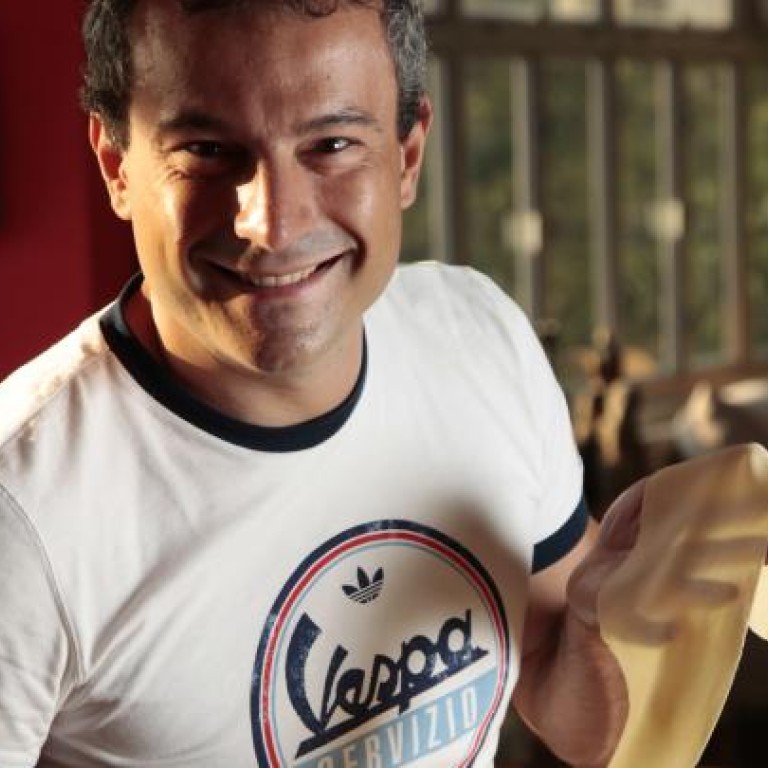
Healthy Gourmet: The joy of home-made pasta
"What you do is memorable, when you put your heart in it," grandmother Elda used to tell me.
As a young boy, I spent long afternoons amid the warmth of her stoves, waiting in anticipation for the week when she prepared the family's tomato sauce supply for the whole year.
Her home was full of tomato baskets, empty bottles that needed to be sterilised in boiling water, and the pots where the precious sauce was cooked for long hours. My help was much in demand and I was excused for having tomato all over my clothes.
I grew up in the kitchen: the afternoons after school at my grandma's; the evenings helping my mum, who despite a long day at work never failed to prepare a fresh dinner for the family; the Sundays with my dad, who after church prepared fresh pasta and his roast.
These days I continue my love affair with food as a private chef, cooking clients a four-course Italian dinner. There are plenty of good Italian restaurants in Hong Kong, both trendy and classic, but I believe people come to me because I bring happiness to the table.
Through my dishes, I guide my clients' imaginations on a journey that revolves around Italy and its culture and traditions. It is an experience, and as such is eventful, surprising and joyful. This is, I believe, what ultimate dining is about.
I believe everyone can cook a great meal. A bit of knowledge is needed, but just a little. What you really need are five virtues.
You must have a love affair with food and sharing it with friends.
Take your time to cook; haste is not a friend of the kitchen.
Cut small and cook little. In general, this is the best way to both preserve the flavours and nutrients of food.
Be daring but humble: better a simple dish well done than a complex one that is not satisfying.
Nothing is simpler to prepare than pasta, but so many people get it wrong. Here are the secrets to cooking it perfectly.
With roughly 350 calories and 1.4 grams of fat per 100 gram serving, and barely any sodium and no cholesterol, pasta - eaten in moderation - is an ideal foundation for building healthy meals. Whole-grain and whole-wheat pasta offer more nutrition than traditional white pasta, but tend to be coarser and chewier.
There are two main types of pasta: fresh and dried. The fresh one is made with egg and it should be made at home; there is no product in the market that is able to achieve the good taste of home-made fresh pasta. It is mainly used for filled pasta, like ravioli and tortelli, or cut into long strips for tagliatelle and pappardelle.
Spaghetti, linguine, maccheroni and penne are the dried pasta, made of durum wheat flour. You can't make these at home.
The point of each type of pasta is the marriage with its sauce. Spaghetti is best with oil and tomato-based sauces, which contain nothing too chunky, so that the sauce can cling to it.
Penne is best for sauces with meat and vegetables, so that the ingredients are trapped inside the tubes, whereas with spaghetti it will get left on the plate.
Buy quality Italian pasta. De Cecco, widely available in Hong Kong, is a very good one. Notice the cooking time is above 10 minutes: be suspicious of anything that cooks below six minutes.
You need a high cylindrical pot, possibly made of stainless steel. The formula is straightforward: one litre of water for 100 grams of pasta, which is the amount of pasta for one person. This is the minimum amount of water; anything above is good too.
To cook properly, the pasta needs enough space to swirl around easily. Don't cook more than 500 grams of pasta together; if you have more than five guests, use two pots.
Once the pasta is at a rolling boil, add 10 grams of coarse salt for each litre of water, and after one minute add the pasta. While it cooks, don't leave it alone but gently stir it from time to time.
Everyone has their own preference for pasta texture, but generally you should make sure that the pasta stays firm, not too soft.
Now, here's the secret for pasta as it is done in restaurants: when taken out of the water, the pasta tends to soak up a lot of liquid. If you add your sauce at this point, it will absorb all the moisture of your sauce and you will end up with a dry dish.
Instead, take the pasta out one minute before the time you would consider it ready. Mix it together with your sauce on a pan over the fire and add some broth or the water you used to cook the pasta, say around 40 millilitres per person. Don't be afraid if it looks wet, in 30 seconds the pasta will absorb all the water and the flavours of your sauce.
